Industries
Our Innovative Measurement and Testing Products are Designed to Enable Test Engineers Everywhere to Overcome Challenges of Every Scale
Around the world, leading manufacturers, R&D firms, and educational institutions are on a mission to constantly improve product performance, quality and safety – which ultimately leads to greater customer satisfaction. What’s another thing they have in common? They employ the use of dynamic measurement and vibration test systems to get there.
Engineers rely on our applications expertise and precision test equipment to validate and fine-tune new designs and structures.
Aerospace
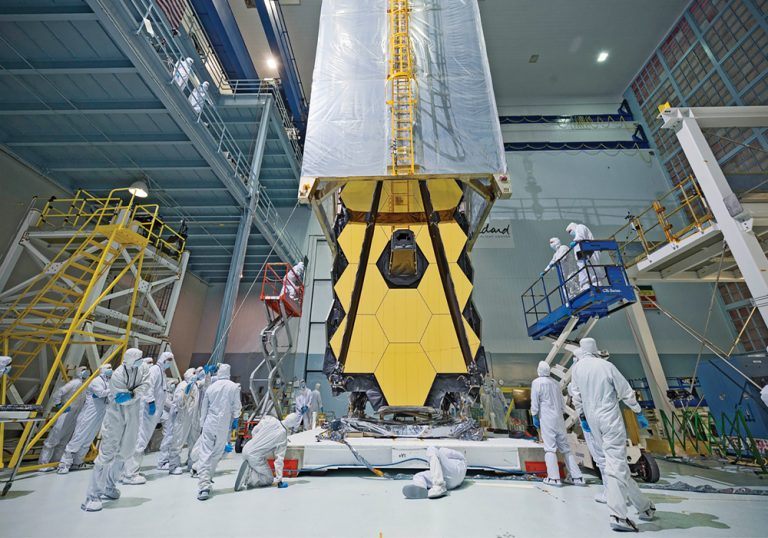
Aircraft, spacecraft, and satellite development requires rigorous testing to meet a unique set of challenges including temperature, atmospheric pressure, weight specifications, flight launch dynamics and heavy structural loads. We supply the analysis and test systems engineers need to produce aerospace components that are exceptionally safe and durable.
Data Physics delivers high-end instruments and solutions for the aerospace community to test, analyze, and reproduce these unique dynamic conditions. NASA, the US space agency, has a long history of working with Data Physics for engineering solutions.
Dynamic Measurement in the Aerospace Industry
Engineers at leading aerospace companies frequently use Data Physics Dynamic Signal Analyzers for dynamic measurement applications ranging from rotating machinery analysis of components to large channel count modal analysis, acoustic tests, and ground vibration tests (GVT).
Aerospace ground vibration tests and flutter tests often require electrodynamic shaker systems to induce excitation in the structure. Inertial shakers are sometimes used to induce lower frequency energy in airframes and other structures. Inertial shakers can be mounted and fully supported in hard-to-reach locations on the structure. Modal shakers are most often used for structural excitation. These vibration exciters are available in a large range of sizes, from very portable models with relatively high force to models that are capable of several hundred pounds of force. Many models of modal shakers feature rotary linear bearings to completely isolate the shaker dynamics from the structure.
Vibration Testing in the Aerospace Industry
Many tests are developed to meet the rigorous demands of spacecraft and aircraft manufacturers, along with standard tests for military and commercial aircraft. For instance, DO-160, “Environmental Conditions and Test Procedures for Airborne Equipment”, published by RTCA, is required as a minimum for many commercial aircraft components by the Federal Aviation Regulations. The European equivalent is EUROCAE/ED-14D. For military aerospace applications, MIL-STD 810 and NATO AECTP-400 are commonly used. See our Testing to Standards page for more information.
Vibration qualification tests, stress screening tests, and R&D tests are not only beneficial for the reliability of products, but often a regulatory requirement for aerospace components. Data Physics offers vibration test equipment for basic production testing all the way to systems designed specifically for large scale aerospace applications. SignalForce Electrodynamic Shakers and Vibration Controllers are commonly used for these tests. Also see Satellite Qualification Testing for specific features that are required for satellite vibration testing.
Multi-shaker tests are often run on extremely large payloads or for multiple degree of freedom simulation. Whether the application is large channel count vibration control or multi-shaker control, our 800 Series Vibration Controllers are specifically designed for these demanding applications.
Traditional vibration tables are not able to generate the energy needed to accurately reproduce most blast off and high air velocity conditions. For these tests, high amplitude acoustic power is generally needed using either a reverberant chamber or tube arrangement. High precision acoustic power generators (sometimes referred to as an electro-pneumatic transducer or EPT) are used to cover a wide range of frequencies at staggering levels. Data Physics offers Acoustic Power Generators to cover both low and high frequency use.
Military and Defense
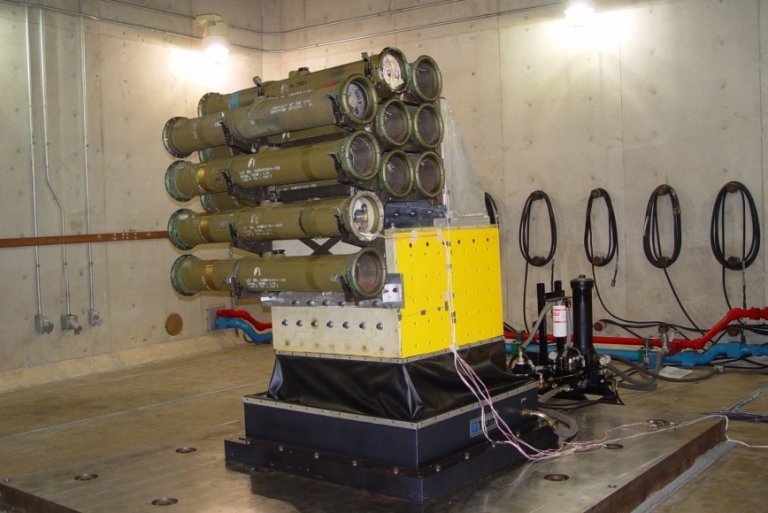
The worldwide defense industry is a highly competitive and innovative industry made up of commercial and government entities. Testing and analysis is vital for the defense industry due to the high stakes involved. The military needs to transport and store highly dangerous materials, electronics need to function, and vehicles need to perform as expected. These conditions make noise and vibration testing critical.
High Channel Count Noise and Vibration Measurement in the Defense Industry
Engineers at leading military facilities and suppliers frequently use Data Physics SignalCalc Dynamic Signal Analyzers for applications ranging from rotating machinery analysis of components to large channel count modal analysis, acoustic tests, and ground vibration tests (GVT). Learn more about SignalCalc Dynamic Signal Analyzers.
Many military applications are not concerned with the comfort levels or noise of the equipment being used. However, for some equipment, such as submarines, it is critical. Vibration signatures from the drive line or axillary equipment can be the difference between being noticed or not. Leading US submarine facilities use high channel count Data Physics SignalCalc Dynamic Signal Analyzers for exactly this type of analysis. The DSP centric nature of the analyzers allows the hardware to simultaneously measure throughout the vehicle, connecting only by network cable. Learn more about the SignalCalc Savant system for high channel count testing.
Vibration Testing in the Defense Industry
Military equipment suppliers as well as test facilities inside military organizations frequently do vibration testing to assess survivability of electronics, systems, munitions, and entire vehicles. Although government programs often have specific test specifications, many military applications rely on MIL-STD 810 and NATO AECTP-400 for guidance. See Military Standard Testing for more information.
Vibration qualification tests, stress screening tests, and R&D tests are not only beneficial for the reliability of products, but often a required for various defense programs. Data Physics offers vibration test equipment for basic production test all the way to systems designed specifically for large scale aerospace applications – like NASA’s James Webb Space Telescope. Data Physics Electrodynamic Shakers and Vibration Controllers are commonly used for these tests.
Multi-shaker tests are often run on extremely large payloads or for multiple degree of freedom simulation. Whether the application is large channel count vibration control or multi-shaker control, Data Physics Matrix Vibration Controllers are specifically designed for these demanding applications.
Traditional vibration tables are not able to generate the energy needed to accurately reproduce many blast off and high air velocity conditions. For these tests, high amplitude acoustic power is generally needed using either a reverberant chamber or tube arrangement. High precision acoustic power generators (sometimes referred to as an electro-pneumatic transducer or EPT) are used to cover a wide range of frequencies at staggering levels. Data Physics offers High Intensity Acoustic Power Generators to cover both low and high frequency use.
Underwater Sound Generation and Measurement
Underwater acoustic generation and test systems are often used by the world’s Navies for calibration of acoustic ranges, sonar signal generation and measurement, sonar training, and even mine sweeping. Data Physics SignalSound series of products is designed to do just these things. Learn more about SignalSound Underwater Sound Source and Measurement Systems.
Semiconductors
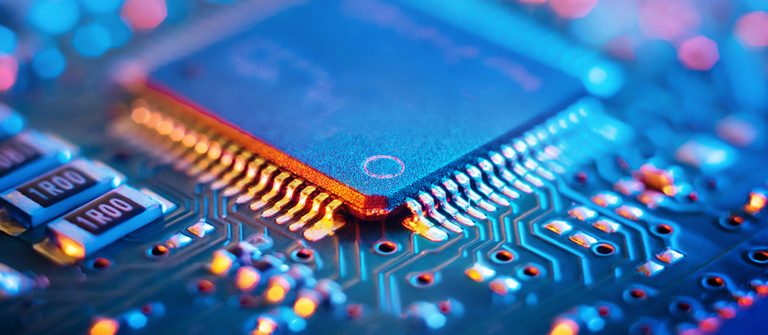
Semiconductors are substances with electrical conductivity resulting from electron flow. The semiconductor industry, with roots in the San Francisco Bay Area’s “Silicon Valley”, includes a number of companies that design, fabricate, and manufacture semiconductor materials. Semiconductor components are found in computers, radios, telephones, transistors, and consumer electronics.
For decades, semiconductor companies have trusted Data Physics products to test, analyze, and improve semiconductors. Leading semiconductor equipment manufacturers such as FEI and KLA-Tencor, and leading chip manufacturers such as Intel, trust Data Physics for dynamic measurement and analysis.
Very low level structural measurements and transmissibility measurements are important to the semiconductor industry. Accurate dynamic frequency measurements and frequency response functions, the portability of Data Physics hardware, and the ease of use of SignalCalc software makes SignalCalc Dynamic Signal Analyzers the leading analysis tool for noise and vibration in the semiconductor industry.
Education, University and Research

Many universities and research institutes in North America, Europe, and Asia use Data Physics products for noise and vibration or test and measurement research. Data Physics instruments are state of the art, propelling cutting edge research in universities.
Additionally, leading university engineering departments regularly work with Data Physics on a variety of academic projects, and Data Physics is open to new areas of joint research.
Among many others, Data Physics university and research customers and partners include:
California Institute of Technology
University of California – Berkeley National Laboratory
University of California – Los Angeles
University of California – San Diego
Columbia University
Massachusetts Institute of Technology
Rensselaer Polytechnic Institute
Purdue University
The Ohio State University
Michigan Technological Institute
Northern Illinois University
New Mexico State University
Tennessee Technological University
University of Arkansas
University of Texas – Austin
Utah State University – Logan
Seoul National University of Technology – Korea
National University – Singapore
National Central University – Taiwan
National University of Science and Technology – Russia
Helsinki University of Technology – Finland
University of Cape Town – South Africa
University of Madrid – Spain
Istanbul Technical University – Turkey
University of Glasgow – UK
University of Sheffield – UK
National Institute of Standards & Technology (NIST)
Center for Advanced Lifecycle Testing (CALCE)
Argonne National Laboratory (ANL)
Battelle Memorial Institute
Pacific Northwest National Laboratory (PNL)
Jet Propulsion Laboratory (JPL)
Los Alamos National Laboratory (LANL)
Sandia National Laboratories
Lawrence Livermore National Laboratory (LLNL)
Knolls Atomic Power Laboratory (KAPL)
Brookhaven National Laboratory (BNL)
Georgia Tech Research Institute (GTRI)
Southwest Research Institute (SWRI)
Pennsylvania State Applied Research Laboratory (ARL)
Mercer Research Center
Laboratoire Central des Ponts et Chaussees (LCPC) – France
Structural Engineering Research Center (SERC) – India
National Institute of Ocean Technology (NIOT) – India
Institute for Development and Commercialization of Advanced Sensor Technology (IDCAST)
Power Generation and Turbomachinery
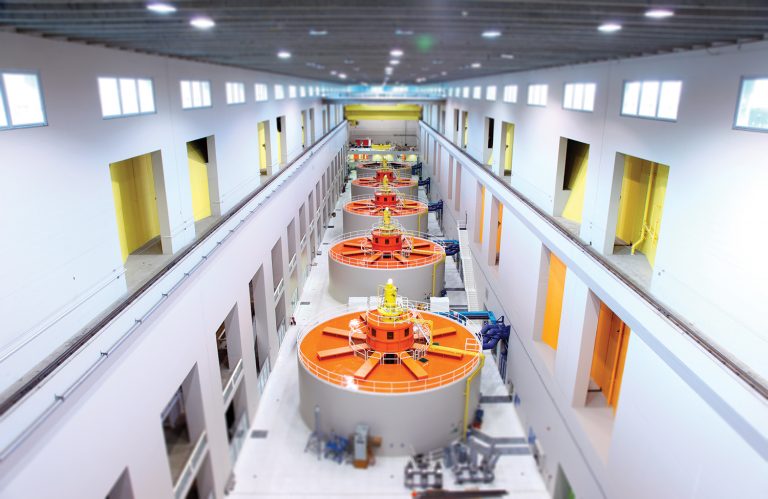
Power generation, or electricity generation, involves processing electricity from other types of energy. Turbomachinery, in turbines and compressors, entails the distribution of energy between a rotor and a fluid. Turbomachinery can take the form of pumps, fans, turbines, propellers, windmills, and even jet engines.
Vibration analysis of turbomachinery often requires sophisticated data acquisition hardware and advanced measurement and analysis software functions, rotational phase detection, tachometer measurements, tracking filters, and a wide array of time and frequency domain graphical presentations.
The SignalCalc Turbo Rotor Dynamics Analyzer is an advanced rotating machinery diagnostic and analyzer tool. Turbo has elegant data management utilities that allow users to choose how often measurements are stored. Acquisition can be paced by time interval or speed changes to accurately characterize plant vibration under any operating condition.
In addition to rotor dynamics, many other vibration and structural problems can occur in power plants. One of the more troublesome problems is excess vibration in pipes and piping systems. Learn more about piping analysis and modal analysis.
Automotive and Commercial Vehicles
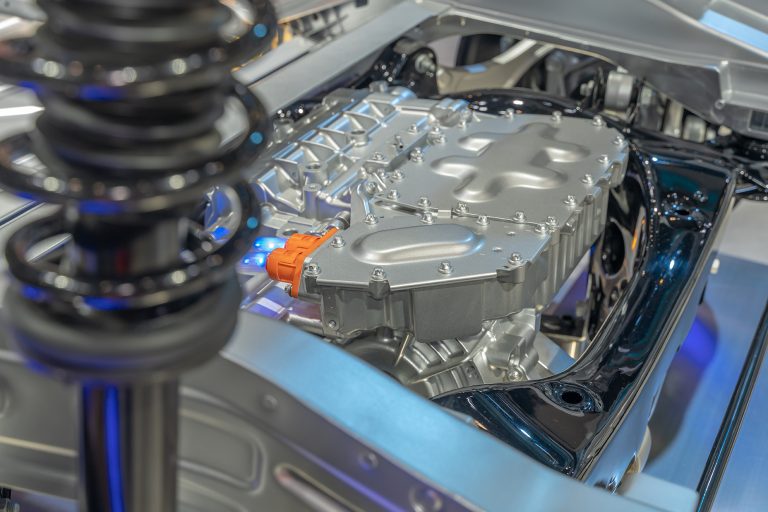
Today’s marketplace demands that manufacturers supply cars, motorbikes, trucks, buses, and other vehicles that are safe, high quality, fuel efficient, durable, and cost-effective. Automotive manufacturers are not only in a race to create new designs and models at a rapid pace, they are constantly under pressure to produce vehicles that have durability and NVH (noise, vibration, and harshness) qualities that are competitive in the marketplace. Data Physics assists in this process.
The automotive and commercial vehicles industry applies electrical, mechanic, and safety engineering in its manufacturing. Data Physics has worked with leading carmakers for decades to improve the product engineering progression.
Dynamic Measurement in the Automotive Industry
Dynamic signal analyzers are the tools most commonly used for NVH, acoustic test, structural test, and rotating signal analysis. Consequently, SignalCalc Dynamic Signal Analyzers are common tools found in both development and manufacturing of vehicles.
Nearly every automotive OEM uses the SignalCalc Ace Dynamic Signal Analyzer (on Quattro) in one respect or another. The Quattro is an ultraportable PC based analyzer platform. It is an easy-to-use analysis tool for low input structural tests, quick in-vehicle measurements, test validation, and troubleshooting. The system is an ideal replacement for cumbersome bench top analyzers such as the HP/Agilent 35670A analyzer.
Vibration Testing in the Automotive Industry
Vibration testing for qualification, product verification, and R&D are not only beneficial for the reliability of products, but often required of component manufacturers by vehicle OEMs. Data Physics offers a full array of vibration test systems for the automotive industry. Whether the application is with combined thermal testing or on a standalone shaker, SignalForce Electrodynamic Shakers and Data Physic Vibration Controllers used together are the vibration test system of choice for many automotive industry leaders. Learn more about our electric vehicle battery test systems – used by a major test house.
Although Random vibration testing has many advantages, the majority of durability tests for ground vehicles are done with multi-shaker time replication. Hydraulic and electrodynamic multi-shaker tests are common to reproduce the desired degrees of freedom. Whether it is full 6 DOF control or something less, the Matrix Controller is designed for to handle multi-shaker control for time replication, real-time random control, and real-time swept sine control.
Specifically for swept sine testing, Data Physics offers a time saving approach by simultaneously sweeping multiple sine tones across the desired frequency range. This simultaneous sine tone sweep reduces the time required to excite all the frequencies in the range. This technique has recently been approved for use by a consortium of German automobile manufacturers including Daimler, BMW, Volkswagen, Porsche, and Audi. True swept Multi Frequency Sine Control is another unique capability provided by Data Physics.
Data Physics has custom developed control systems used for rotating harmonic vibration control. Often used with Team Corporation 901 Vibration Systems, the Data Physics Engine Simulator Controller provides true multi frequency control of harmonics impose on the engine simulation process for testing of powertrain rotating components. Learn more about the Data Physics Engine Simulator Controller.
Civil Engineering

Civil engineers work on a variety of projects where measurement quality is critical. Engineers come from a variety of specializations including construction, earthquake, environmental, geotechnical, materials, transportation, water resource, and urban engineering.
Ground and transportation vibration measurements are often evaluated for sensitive structures and the isolation of scientific or sensitive manufacturing equipment. These vibration levels are often very low in amplitude and require accurate measurement using instruments with low noise floors and high dynamic range. Leading geotechnical engineers also employ the use of Data Physics systems for a variety of soil and structural test measurements. Portable field measurement systems with real-time analysis and simultaneous time recording make SignalCalc Dynamic Signal Analyzers the ideal choice for all civil engineering dynamic measurements.
Critical structures such as bridges, dams, and large buildings often undergo a variety of tests, including structural testing. Using various inputs such as shaker trucks or impact hammers, engineers in the field look at dynamics of large structures. In addition to dynamic signal analysis, Data Physics offers a range of Inertial and Modal Shakers. These shakers provide an alternative means of excitation, often to higher frequencies. Our inertial shakers cover a force range from 7 to 56 lbf (30 to 250 N) and our modal shakers cover a force range from 18 to 475 lbf (80 N to 2.1 kN).
Off-Highway Machinery

Off-highway machinery includes many forms of construction equipment, agricultural equipment, and off-highway vehicles such as ATVs and snow mobiles. Vehicles and machinery that are intended to operate in rugged terrain must be able to handle those environments, and this often calls for more than just brute force design.
Noise and Vibration Measurement
Dynamic signal analyzers are the tools most commonly used for NVH, acoustic test, structural test, and rotating signal analysis. Consequently, SignalCalc Dynamic Signal Analyzers are common tools found in both development and manufacturing of many types of machinery.
Additionally, many standards, such as the European Commission’s Directive 2000/14/EC, regulate the noise on the environment by equipment for use outdoors. These standards require sound power testing to certify that the equipment meets the standard. Learn more about using SignalCalc Dynamic Signal Analyzers for Sound Power Testing.
Vibration Testing
Vibration testing for qualification, product verification, and R&D are not only beneficial for the reliability of products, but often required of component manufacturers by off-highway OEMs. Data Physics offers a full array of vibration test systems for durability tests and vibration tests. Whether the application is with combined thermal testing or on a standalone shaker, SignalForce Electrodynamic Shakers and Data Physics Vibration Controllers used together are a high quality solution for any vibration test application.
Although Random vibration testing has many advantages, the majority of durability tests for ground vehicles are done with multi-shaker time replication. Hydraulic and electrodynamic multi-shaker tests are common to reproduce the desired degrees of freedom. Whether it is full 6 DOF control or something less, the Matrix Controller is designed to handle multi-shaker control for time replication, real-time random control, and real-time swept sine control.
Oceanographic and Sonar

Sonar, or Sound Navigation and Ranging, uses both active and passive means to identify ships and submarines at sea. Data Physics specializes in the design and manufacturing of low frequency acoustic projectors, and their associated electronic and handling systems, to simulate the acoustic signatures of ships, submarines, and underwater weapons.
SignalSound systems are used by naval forces and ship builders to train sonar operators and to test the performance envelope of a platform’s ASW capabilities. They can also be used for calibrating acoustic ranges and acoustic data gathering systems. The systems are even now used for aiding in mine sweeping. Learn more about SignalSound.
SignalCalc Dynamic Signal Analyzers are also commonly used for underwater acoustic applications. Measurement of hydrophone arrays is not uncommon, and special software features such as frequency domain correction and measurement pass through are available. Whether used for measuring a full hydrophone array or as a troubleshooting tool for such a system, SignalCalc Dynamic Signal Analyzers offer a solution.
Rotating Equipment Manufacturer
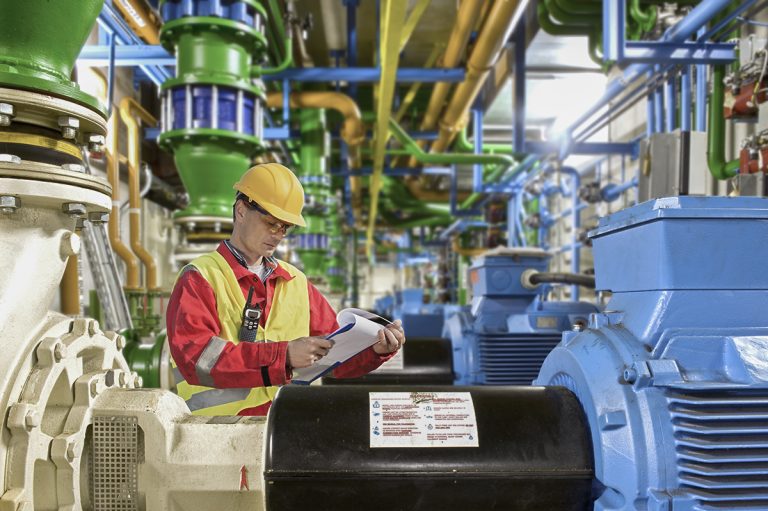
Manufacturers are almost always concerned with machinery vibration, or the noise and vibration performance of rotating equipment. Whether that machine is an appliance, hand tool, machine tool, pump, or compressor, the vibration qualities of the machine make it more or less competitive in the marketplace. Consequently, many manufacturers of rotating equipment place a high priority on reducing noise and vibration of the product, as well as survivability of the product during shipment use.
Data Physics SignalCalc family of analyzers provides tools for engineers to evaluate rotating machinery dynamics as they relate to the speed of the machine. These measurements often have a strong influence on the perceived performance and design characteristics of the equipment.
Additionally, manufacturers of rotating machinery routinely perform vibration analysis as part of end-of-line testing or benchmark testing. This analysis and supporting data may even be part of delivery of a large system such as a turbine or generator. For these large systems, performance testing in the factory or at the customer installation and troubleshooting for fault analysis can be easily handled with a single platform. Whether performing spot checking on a batch of product or 100% quality testing, SignalCalc Dynamic Signal Analyzers provides solutions to meet rotating machinery analysis needs.
For large turbo machinery applications, field engineers involved with warranty issues and service contracts at customer sites can always benefit from understanding in more detail the rotor dynamics of the turbine, generator, motor, pump, gearbox, or compressor in question. SignalCalc Turbo comes in a modular, portable package and provides an excellent platform for measuring and evaluating vibration characteristics of fluid-film bearing machines fitted with proximity probes. Well-suited for extended duration tests and with unlimited expandability, SignalCalc Turbo also provides rotating machinery design engineers with the complete, accurate vibration measurements they need to validate machinery design and performance on the high-speed test stand as well as in the field.
Independent Environmental Test
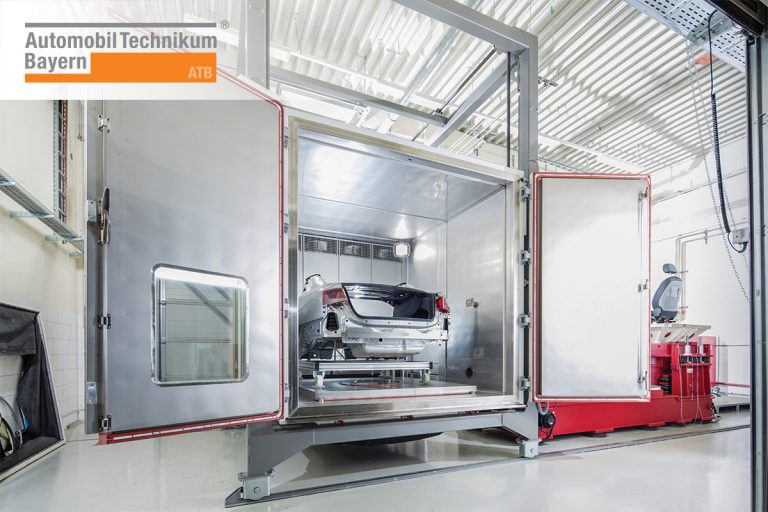
Although nearly every electronic and dynamic product undergoes shock and vibration tests, often on both the system and component level, many companies choose to outsource that work to independent environmental test laboratories. These labs simulate all external and internal conditions (such as temperature, humidity, radiation, magnetic and electric fields, shock vibration, etc.) either natural or man made, or self-induced, that influences the form, performance, reliability, or survival of an object.
Many leading environmental test laboratories employ Data Physics instruments to achieve superior testing and analysis results. Data Physics precision instruments are well-suited for the diverse and changing nature of environmental test lab work, and are flexible in function and scale. Nearly every product that Data Physics manufactures is in use at independent environmental test labs around the world.
Many independent test laboratories are concerned with keeping older equipment operating. Additionally, these labs run varied tests and often stretch the limits of their equipment. Data Physics worldwide service organization is able to provide service and parts for shakers of nearly every brand. Learn more about shock and vibration tests and electrodynamic shaker and amplifier repairs, service, and parts.
Process, Petro-Chemical, and Pulp and Paper

There are numerous applications for diagnostics and troubleshooting in the process industry. The two industries with the most widely needed applications for vibration analysis are the petrochemical industry and the pulp and paper industry.
Petroleum and petrochemical processing are often in-depth processes that may require various forms of troubleshooting and diagnostics. Petrochemical plants often have a wide variety of rotating machinery and even their own power generation. Learn more about SignalCalc Dynamic Signal Analyzers for vibration diagnostics.
Pulp and paper processing is also a complicated process using advanced high speed machinery. Due to the complex nature of paper machines, there are a variety of problems that can be diagnosed with SignalCalc Analyzers. Both paper machine manufacturers and paper mills use Data Physics instruments to raise the performance and operations of their machines. Learn more about our SignalCalc Dynamic Signal Analyzers.
Electronics, Computers and Telecom
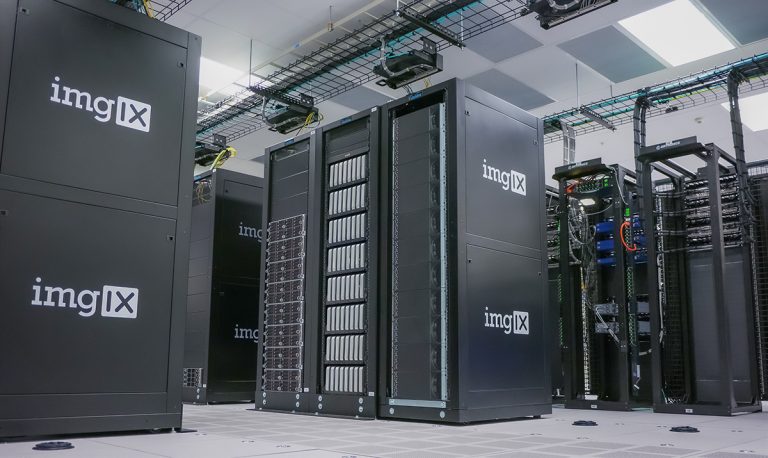
To meet insatiable consumer demands, the electronics industry is continuously shifting. Companies are rapidly building a multitude of devices including smartphones, desktops, laptops, cameras, tablets, etc. Electrical engineers need high precision instruments to test their equipment, and Data Physics accommodates those engineers with the testing equipment they need to ensure high quality products.
Vibration Testing of Electronics and Electrical Components
Leading manufacturers such as Cisco, Microsoft, IBM, Agilent, and Hewlett-Packard have standardized on Data Physics vibration test equipment. Data Physics controllers combine the best control algorithms available with accurate, high dynamic range, hardware. SignalForce shakers have proven to be extremely reliable and robust shakers that can take the daily duty required by electronics companies. The combination of accuracy and reliability makes Data Physics vibration test equipment the top choice for leading manufacturers. Those that make the best quality equipment want the best quality equipment to develop with. Learn more about our Electrodynamic Shakers and Vibration Controllers.
As a contributing member of the Electronics Products and System Consortium at The University of Maryland’s Center for Advanced Lifecycle Testing (CALCE), Data Physics is very active in the vibration and fatigue properties of electronics. At CALCE, engineers use the Matrix multi-shaker control for simulating vibration on six degrees of freedom (6 DOF) tests for fatigue simulation. The Matrix system is used on special multi-shaker systems with twelve actuators. The Matrix is the only multi-shaker/multi exciter controller that can handle this demanding application.
Telecommunications equipment has additional requirements to function after severe events such as earthquakes. These tests are often performed to specific industry standards that are required by either the telecom service provider or local regulations. Learn more about Seismic Testing.
Shock and Drop Testing of Electronics and Electrical Components
In addition to rigorous vibration profiles, electronics need to survive repetitive drops in use. One of the very nice features of electrodynamic shakers is the capability for high velocity to do repetitive shock measurements. However, often shakers cannot achieve the levels needed for shock and external shock test devices are needed. The most common of these are drop test machines and pneumatic shock machines.
Data Physics supplies shock and drop test software that is both powerful and easy to use. The software can automatically perform all the necessary calculations including fairing or filtering, velocity calculation, limit checking, and even SRS calculations with limit checking. Whether replacing an outdated system or implementing a new program, SignalCalc Drop Test is a modern, scalable shock acquisition package that surpasses requirements.
Dynamic Analysis of Electronics and Electrical Components
Consumer electronics with moving components such as fans or disk drives are most often tested and examined to reduce noise and vibration. Acoustic octave testing to meet various standards is commonplace, and narrowband noise measurements for internal development are becoming more widely accepted in the marketplace. SignalCalc Dynamic Signal Analyzers have the capability to perform all the basic vibration analysis, structural dynamics testing, and noise testing that electronics manufactures need to do on a daily basis.
Semiconductor manufacturers, and machine manufacturers, have very specific needs for accuracy and portability.

